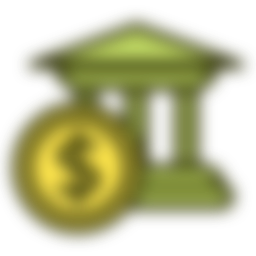Most people have no idea where money comes from.
Even those who think they do know are usually wrong.
Once upon a time, of course, we used metal as money – gold, silver, nickel
and copper. We’ve also used items as varied as shells, cocoa beans, whales’
teeth, even salt (from where we derive the word ‘salary’). These ‘commodity
currencies’ all occurred naturally and had a cost of production to them. You had
to mine the metal, grow the beans, collect the shells and so on.
Gradually, pieces of paper representing gold or silver stored in a vault were
preferred to the actual metal, though you could swap that piece of paper for
actual gold if you wanted. This was ‘representative currency’. During the time of
the gold standard, laws would, eventually, limit the privilege of issuing representative notes to the central bank. However, money was still based on gold
and silver and so it still had a cost of production.

In 1914, France, Germany and the UK came off the gold standard. In other
words, it was ruled that those pieces of paper money issued by the central bank
could no longer be swapped for gold. Now it was the law, rather than gold and
silver, which gave money its value. You had to accept this paper in payment of
debt. And, because it was now just paper, money had a minimal cost of
production.
In 1971, the US followed this same path to fiat money – ‘fiat’ meaning by
government command. Effectively, governments had granted themselves the
right to create money for nothing, a right they did not previously enjoy. The age
of the large state in which we now live would quickly follow.
Over the last 30 years, however, those government pieces of paper have been
used less and less. With electronic banking, which began in the early 1980s,
money has become digital or electronic. With this change, the power and
influence of banks has grown.
In the US, there are currently about 1.3 trillion dollars in existence in the
form of bills and coins.
9 Some are held in banks, some by companies, and some
by individuals. Those 1.3 trillion dollars of printed notes equate to just 8% of all
US dollars.
10 But many of those printed notes have been lost or destroyed and
between half and two-thirds are estimated to be abroad,
11 so it is now thought
that just 3% of the US dollars in existence are in physical form in the US.
In the UK, there is a similar story: 3–4% of money in banks and building
societies exists in physical form.
12
Governments have coined or printed the 3–4% of money that is physical
cash. But the remaining 96–7% of money is almost all created by banks.
Contrary to what most people believe, it is not the government and the central
bank that make most of our money. It’s banks.
Many people shake their head incredulously at this. How on earth can it be?
Well, banks (not central banks, but so-called ‘private banks’; the likes of
HSBC or Wells Fargo) create money when they make loans. Consider the sale of
my house. The purchasers took on a mortgage to buy it, as is normal. In issuing
the mortgage (for which they took the deeds of the house as collateral), the
lending bank created money, which was then paid to me. The funds didn’t come
from investors or from the deposits of others. The money did not previously
exist.
Thus modern electronic money – dollars, pounds and euros – is created
through lending. Of course, governments create money through such processes as quantitative easing, but, even so, most money is lent into existence. This
power to ‘create’ money through lending is what has made the worlds of banking
and finance so large, powerful and rich.

Modern money could thus be defined as ‘electronic debt-based fiat currency’.
Research by UK think tank Positive Money shows that since 1989, money
creation has been growing by 11.5% per annum. Compounded over time, the
entire money stock doubles every six years and three months. This used to be
what we called inflation, but modern measures of inflation now ignore money
supply and instead focus on the prices of certain goods.
The morals of such a system – where certain privileged groups get to create
money – are dubious. The system has, as I argue in depth in Life After the State,
created all sorts of inequalities across society, chief among them the wealth gap.
But, because money supply growth is no longer considered important, many of
the causes of inequality go undetected, while the proposed cures are
misdiagnosed.
The shortcomings of our money systems are something that Satoshi was
attempting to address when he designed Bitcoin:
The root problem with conventional currency is all the trust that’s
required to make it work. The central bank must be trusted not to debase
the currency, but the history of fiat currencies is full of breaches of that
trust. Banks must be trusted to hold our money and transfer it
electronically, but they lend it out in waves of credit bubbles with barely
a fraction in reserve. We have to trust them with our privacy, trust them
not to let identity thieves drain our accounts. Their massive overhead
costs make micropayments impossible.
Discounting trust, Satoshi set out to design a system of money based on ‘proof
instead.
Cryptographic proof.
You can Follow me on Noise.cash

